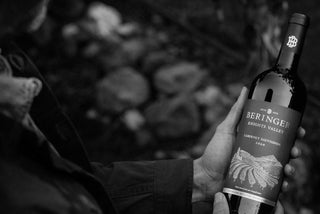Properly storing and serving your wine can greatly enhance the overall experience and ensure it ages beautifully. Here’s 3 tips for storing and serving your favorite Beringer wines.
When it comes to enjoying the allure of a beautiful bottle of wine, the journey often begins long before the cork is popped. From the vineyard to the bottle, wine undergoes a meticulous process of aging and refinement, culminating in the delightful sip that graces your palate. But, to truly appreciate the essence and depth of your cherished Beringer wines, understanding the intricacies of storage and serving is paramount. Whether you're a budding wine enthusiast or a seasoned sommelier, these three essential tips will guide you to experience each bottle's full potential.

1. Create and Maintain the Environment
Aim to store your wine in a cool, consistent environment, ideally between 45-65°F. If you have the space, a wine refrigerator is a great investment. Humidity, light, and positioning also matter. Maintain a humidity level of around 70% to keep corks from drying out. Dry corks can lead to oxidation, spoiling the wine and affecting its flavor. Adequate humidity ensures a tight seal and preserves the integrity of the wine. Light, especially UV rays, can also be detrimental to wine. Store your bottles away from direct sunlight or strong artificial light sources. Lastly, store bottles on their sides. This helps keep the cork moist, preventing it from drying out and allowing air to seep in. If you can’t achieve all three of these, it’s not the end of the world. If you do just one, focus on keeping the temperature consistent. Fluctuations in temperature cause the wine to expand and contract and can lead to air entering the bottle, which you definitely don’t want.

2. Understand Varietal Serving Temperatures
Temperature also has a big impact on how wine tastes when you serve it. For white wines, the temperature sweet spot is between 45-55°F. Lighter whites, like sauvignon blanc, benefit from the lower end, while richer Chardonnays do well at the higher end. Play around with when to take bottles out of the fridge before serving. If the wine isn’t being stored in a fridge, employ an ice bucket to cool it quickly. Red wines are generally served slightly below room temperature, around 60-65°F. Adjust slightly depending on the type of red—lighter pinot noirs prefer the cooler end, while robust cabernet sauvignons may be served slightly warmer.

3. Enhance Flavors with a Decanter
To bring out the full flavors and nuances in your wine, incorporate the art of decanting and aerating. Decanting is not just for show. Pouring wine into a decanter separates sediment and allows the liquid to breathe, intensifying its flavors. You don’t need to decant all wines, however. Reds like cabernet, merlot and zinfandel benefit the most as it helps bring out the tertiary flavors that develop as these wines age. If you don’t have a decanter, you can still aerate the wine by swirling it in your glass. This lets the wine “breath” and softens the tannins and amplifies the aromas.








